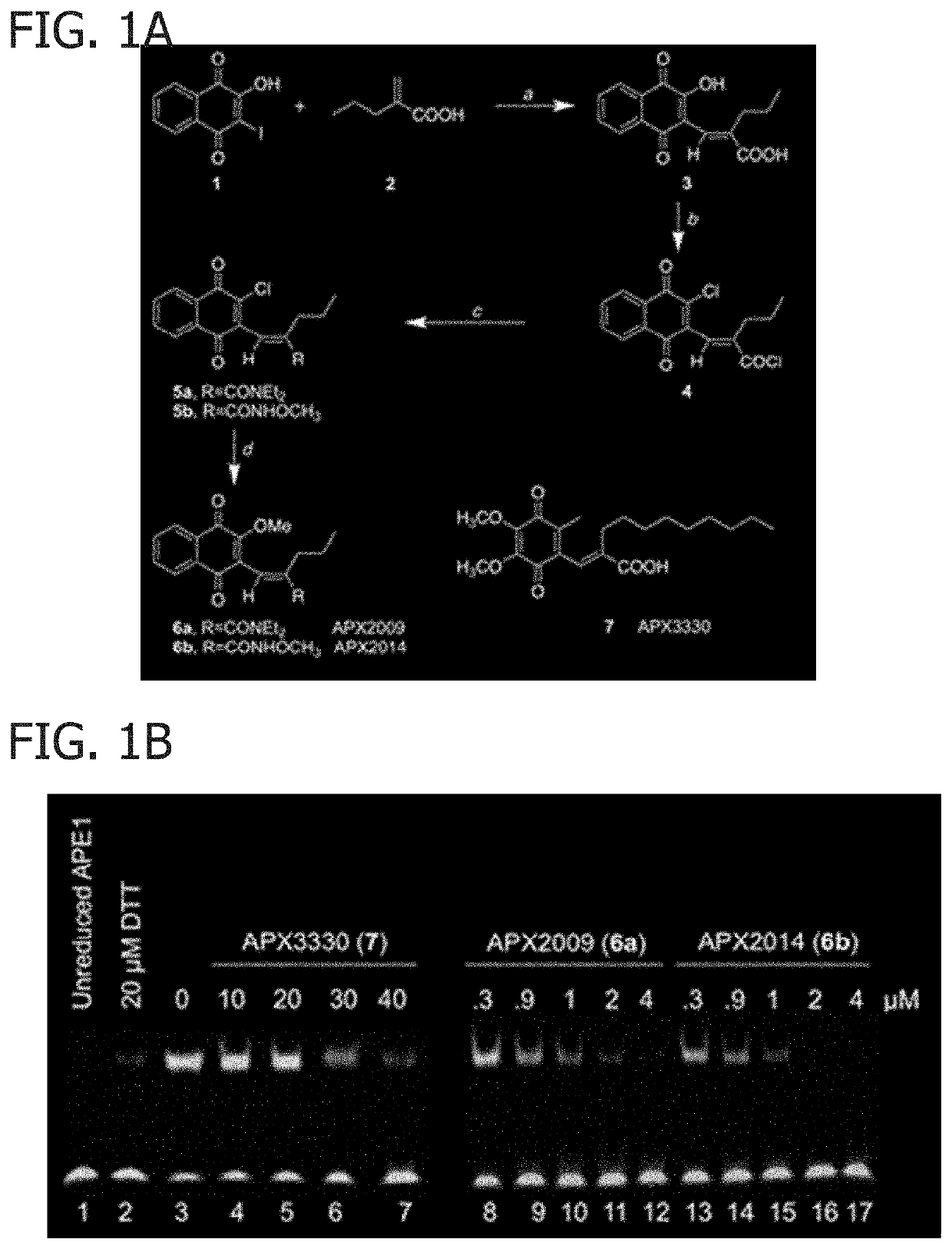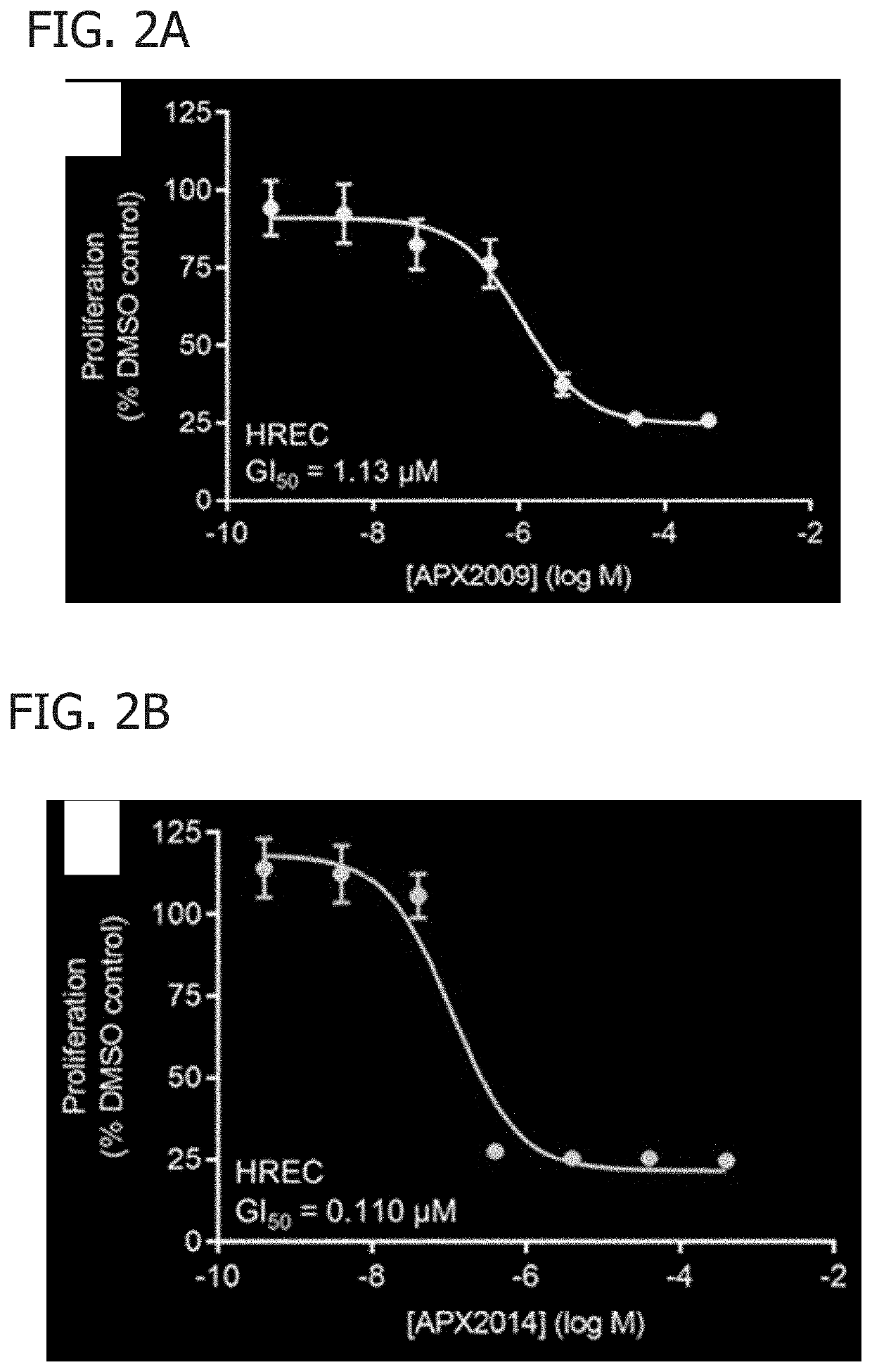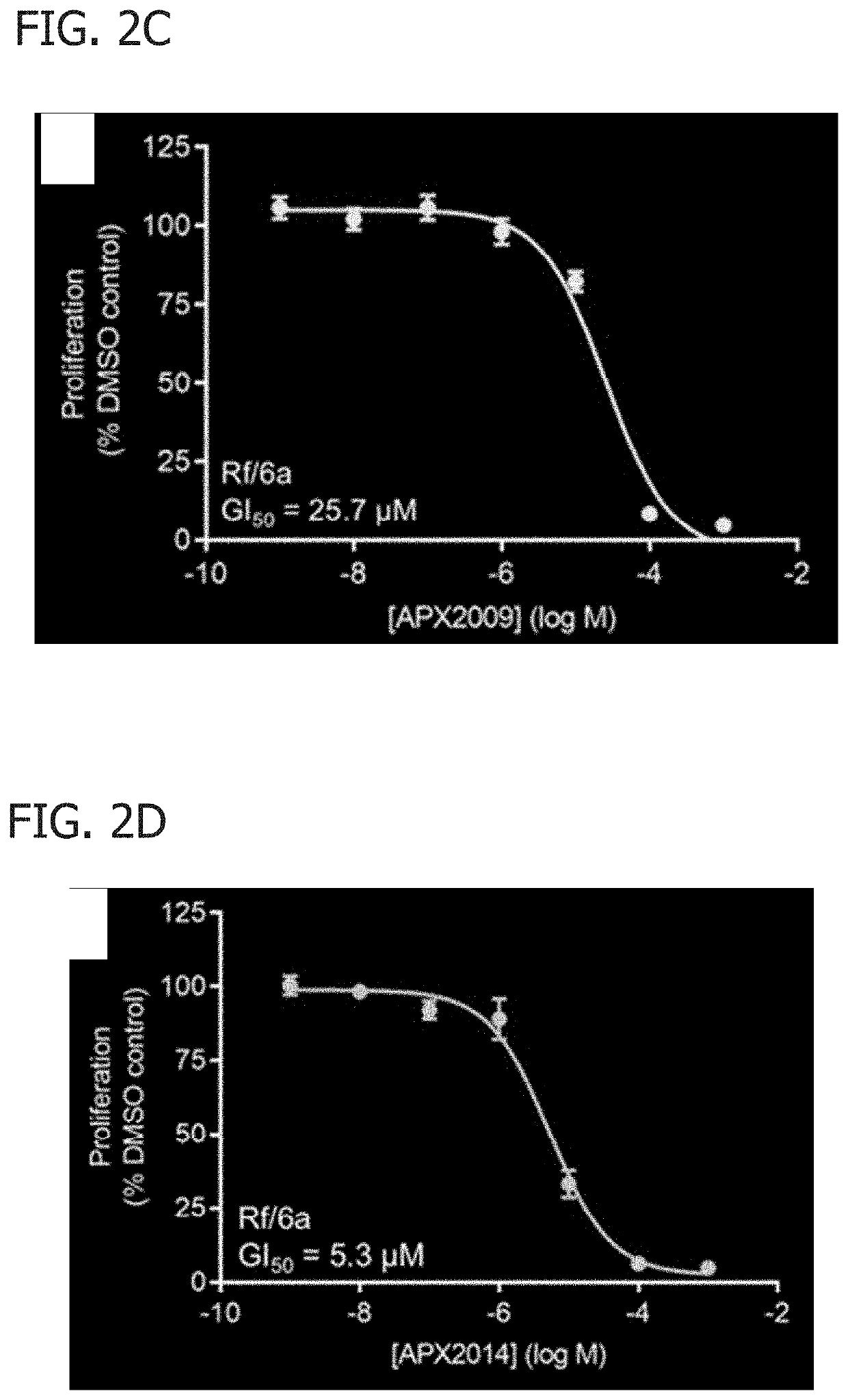Targeting ocular diseases with novel ape1/ref-1 inhibitors
a technology of ape1/ref-1 and inhibitor, which is applied in the field of targeting ocular diseases with novel ape1/ref-1 inhibitors, can solve the problems of possible side effects including hemorrhage and endophthalmitis in patients, and achieve the effects of reducing the ability of hrecs, inhibiting hrec and rf/6a cell migration, and enhancing inhibition of ref-1 function
- Summary
- Abstract
- Description
- Claims
- Application Information
AI Technical Summary
Benefits of technology
Problems solved by technology
Method used
Image
Examples
example 1
[0048]In this Example, APX2009 and APX2014 were analyzed for their function on AP-1 DNA binding and cell proliferation and migration.
[0049]Materials and Methods
[0050]Synthetic Methods. The compounds were synthesized by Cascade Custom Chemistry (Eugene, Oreg.) and provided by Apexian Pharmaceuticals. In summary (FIG. 1A), iodolawsone (2-iodo-3-hydroxy-1,4 naphthoquinone) was made available from Cascade Custom Chemistry. HPLC were performed using an Alltech Alltima column C18 5u, 250×5 6 mm, flow 1 mL / min at 40° C. Elution was with a mobile phase of 15:10:75 water:A1:methanol where A1 was made using 700 mL of water, 300 mL methanol and 3 mL trimethylamine to which phosphoric acid was added to bring the pH to 3.4.
[0051](E)-2-((3-hydroxy-1,4-dioxo-1,4-dihydronaphthalen-2-yl)methylene)pentanoic acid (3). In a 2 L 3-necked flask equipped with a mechanical stirrer and a gas dispersion fitted tube was placed 2-iodo-3-hydroxy-1,4 naphthoquinone, (iodolawsone, 1) (18 g, 0.06 mol) and 2-propyl...
example 2
[0089]In this Example, the effects of Ref-1 knockdown on NF-κB signaling-associated genes was analyzed.
[0090]Human retinal endothelial cells (HRECs) (Cell Systems, Inc. Kirkland, Wash.) were plated in 6-well plates and treated with 0.1 μM APX2009, 1 μM APX2009 or DMSO for 6 hours and 24 hours. Cells were washed once after treatment with PBS, collected and frozen. This process was repeated to collect treated cells in 4 different passages. RNA was extracted in 300 μL Trizol (Life Technologies, Carlsbad, Calif.) and flash frozen at −80° C. The SMARTer system (Clontech, Mountain View, Calif.) was used to generate cDNA from cells. The dscDNA quantity and quality was assessed using an Agilent Bioanalyzer (Agilent Technologies, Santa Clara, Calif., USA) with the High Sensitivity DNA Chip. A total of 48 SCR and 48 siAPE1 cells were chosen for sequencing. The IUSM Genomics Facility prepared libraries using a Nextera kit (Illumina, San Diego, Calif.). DNAs were sequenced using the Illumina Hi...
example 3
[0092]In this Example, the role of Ref-1 on ocular angiogenesis is analyzed.
[0093]The Protein Atlas was mined for expression data on Ref-1. In addition, immunohistochemistry was performed for Ref-1 in de-identified postmortem eye tissue from a wet AMD patient and an age-matched control. Tissue sections were deparaffinized. DAB was used for detection and counterstained with DAPI. Images of retina and choroid were taken on an EVOS fl digital microscope.
[0094]Ref-1 is highly expressed in developing murine retinas, as well as retinal pigment epithelium (RPE) cells, retinal pericytes, choroidal endothelial cells (CECs) and retinal endothelial cells (RECs). At the RNA level, it is expressed higher in retina than in all but a third of 36 other tissue types (https: / / www.proteinatlas.org / ENSG00000100823-APEX1 / tissue). Preliminary evidence also suggests that it is upregulated in the retina and choroid of human wet AMD patient eyes compared with age-matched controls (FIG. 17), suggesting disea...
PUM
| Property | Measurement | Unit |
|---|---|---|
| pH | aaaaa | aaaaa |
| pH | aaaaa | aaaaa |
| emission wavelengths | aaaaa | aaaaa |
Abstract
Description
Claims
Application Information
 Login to View More
Login to View More - R&D
- Intellectual Property
- Life Sciences
- Materials
- Tech Scout
- Unparalleled Data Quality
- Higher Quality Content
- 60% Fewer Hallucinations
Browse by: Latest US Patents, China's latest patents, Technical Efficacy Thesaurus, Application Domain, Technology Topic, Popular Technical Reports.
© 2025 PatSnap. All rights reserved.Legal|Privacy policy|Modern Slavery Act Transparency Statement|Sitemap|About US| Contact US: help@patsnap.com



